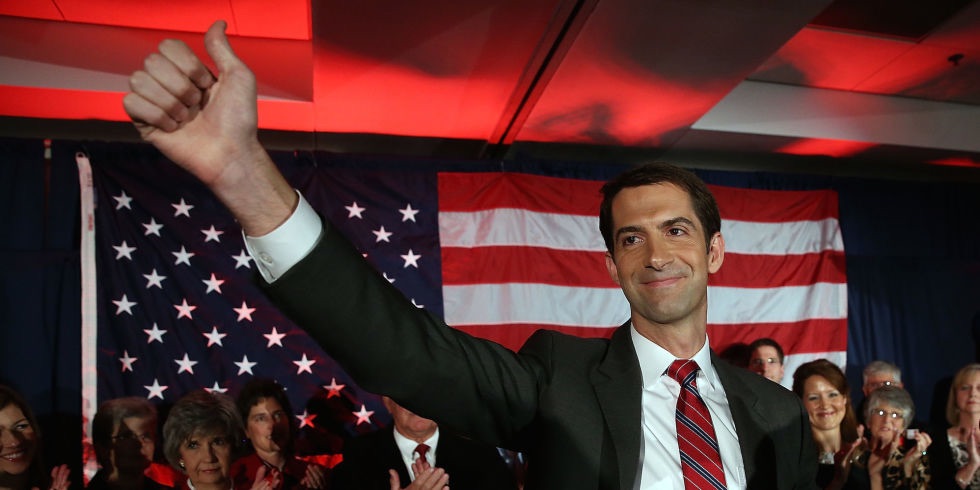Claiming “we have an under-incarceration problem” Racist Suspect Senators Obstruct Prison Sentence Reform
/
In photo, racist suspect U.S. Senator Tom Cotton claims U.S. has 'under-incarceration problem.' The System of White Supremacy Requires a Substantial Number of Non-Whites to be Incarcerated From [HERE] As a college student in Virginia, Corey Jacobs started selling drugs with the help of a group of friends to make some extra money. A Bronx native, Mr. Jacobs was no kingpin, and no aspect of their drug conspiracy involved violence. Now age 46, Mr. Jacobs has served 16 years of a sentence of life without parole in the federal system.
No question, Corey Jacobs should have gone to prison for his felony. But does he deserve to die there?
His sentencing judge does not think so. Judge Henry Coke Morgan Jr. wrote in a letter supporting clemency for Mr. Jacobs that had the law not mandated a life sentence, he would not have imposed one for a first felony conviction.
Sadly, Mr. Jacobs is no anomaly. There are thousands like him serving sentences in our federal and state systems that are disproportionate to their crimes. The financial cost of our current incarceration policy is straining government budgets; the human and community costs are incalculable.
Today, a rare bipartisan consensus in favor of changing drug-sentencing laws presents an opportunity to improve the fairness and efficiency of America’s criminal justice system. But to build on this coalition for reform, which includes senior law enforcement officials, we need action in Congress.
In February 2015, President Obama convened a group of lawmakers — including the Republican senators Chuck Grassley of Iowa and Rand Paul of Kentucky and the Democratic senators Dick Durbin of Illinois and Cory Booker of New Jersey — to build support for sweeping reforms. But the momentum has slowed thanks to opposition from a small group of Republican congressmen using language dredged from the past. One, Senator Tom Cotton of Arkansas, even claimed recently that “we have an under-incarceration problem.”
The [fake] Republican presidential nominee, Donald J. Trump, is now fanning fears about the level of crime in America, which is actually at historic lows. Such pandering is a reminder of how we got here in the first place.
A few numbers help to illustrate the scale of the problem. From the late 1970s, America’s incarceration rate more than quadrupled, to over 700 per 100,000 people from about 130; compare that with Russia, for example, which imprisons about 450 people per 100,000. Between 1970 and 2005, America’s prison and jail population increased sevenfold, to approximately 2.2 million from about 300,000.
The United States has about 5 percent of the world’s population, yet about 22 percent of its known prisoner population. In 2010, it cost about $80 billion per year to house these people in our prisons and jails.
Some more numbers: Controlling for other factors, the United States Sentencing Commission found that between December 2007 and September 2011, black male defendants received sentences 20 percent longer than their white counterparts. From 1983 to 1997, the number of African-Americans sent to prison for drug offenses went up more than 26-fold, compared with a sevenfold increase for whites. By the early 2000s, more than twice as many African-Americans as whites were in state prisons for drug offenses. [MORE]








































































































































































































































































